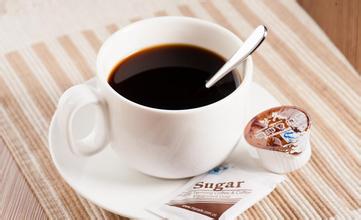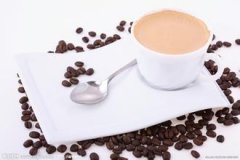A brief introduction to the planting Market Price of Fine Coffee Bean varieties in the full Flavor Snow vein Manor of Bolivia

In 1932, the Chaco War broke out between Bolivia and Paraguay for oil resources in the North Chaco region. Bolivia was defeated and lost a large area of territory.
The people's armed uprising broke out in April 1952, and Paz Estenssoro, leader of the nationalist revolutionary movement, became president. Since then, there have been frequent military coups and long-term political instability. In October 1983, a modern bourgeois democracy with South American characteristics was restored.
On December 18, 2005, the presidential election was held. Aymara Indian, Evo Morales, leader of the Bolivian socialist movement, won the election with 53.75% of the vote and took office on January 22, 2006. He became the country's first Native American president and Bolivia's first left-wing president. The construction of the Bolivian state with progressive community socialism (that is, Indian socialism) as the basic value concept began.
Arabica coffee cannot be grown in cold places above 2000 meters above sea level. if the altitude is too high, coffee trees will frost because the temperature is too low. So Bolivian coffee is mainly grown in the Yungas region northeast of La Paz. It borders the Amazon basin and is about 1500-2500 meters above sea level with an average annual temperature of about 10-15 ℃. Therefore, it ensures the suitable temperature for the growth of coffee and protects the coffee plant from frost. In addition, the Bolivian coffee growing area has a distinct dry and wet season and fertile soil, which is a paradise for the development of boutique coffee. Bolivian coffee is usually picked by hand and is mostly processed by washing. Takesi Manor, the treatment of drinking water and coffee after harvest, uses ice-cold mountains and rivers that melt high mountains, so we give her a nickname: Takesi Snow vein Manor. In addition to a low-temperature, pollution-free environment, fertile and well-drained volcanic soil is also an element of coffee flavor. Although the owner of Agrotakesi SA is rich, he secretly respects nature and the way of getting along with each other, does not over-cultivate, and retains a large number of primitive forests and diverse ecological environment. It is famous for its crops such as apples, orchids and flowers, and now it has won the first prize in the coffee contest, and Takesi's reputation has become even more popular.
I remember that the admirable champion bean in 2007 was Coffee Manor, but her score was overtaken by the 2008 champion Cafe de Cordillera, when the international judges gave it a high score of 92.03. in 2009, Takesi Snow vein Manor got a score of 93.36, surpassing the champion of 2008, and the bidding price was as high as US $35.05. it was the highest bid in CoE national competition in 2009! Osher has been bidding for Bolivia's champion beans for three years in a row. She is really attracted by her delicate floral fragrance, charming sweet vanilla and clean and changeable flavor. In 2010, under the mixture of many factors, Bolivia decided to cancel the national competition. To examine this batch of Takesi winning beans, it was a mixture of feelings and hard-won.
On 25 January 2009, the 16th Constitution in the history of the Republic of Bolivia, which was also the first referendum, was adopted by 61.8% of the votes in favour.
On March 26th, Morales signed the Supreme decree declaring that the original name of the country would be changed from "Rep ú blica deBolivia" to "Bolivia (Plurinational State of)" (El Estado Plurinacional deBolivia).
Most of the east and northeast are Amazon alluvial plains, accounting for about 60% of the country's area; the central part is a valley area, which belongs to the eastern foothills of the Andes, where agriculture is developed and many important cities are concentrated; and in the west is the Bolivian plateau, with an average elevation of more than 1000 meters.
Hydrology
The main rivers are the Beni, Mamore and San Miguel rivers. Lake Titicaca on the border with Peru, 3812 meters above sea level, is the largest in South America.
Lake Titicaca
Lake Titicaca
The lake and the world's tallest large freshwater lake, which are navigable all the year round, are the main transportation roads between the two countries and the birthplace of the ancient culture of South America. [5]
Climatic change
The eastern and central part belongs to the savanna climate, the transition from the western mountain to the subtropical climate, and the inland plateau to the mountain climate. The climate in most areas is dry and cool; the annual precipitation decreases from 2000 mm to less than 100mm from northeast to west. [7]
Natural resources editor
mineral products
Rich in mineral resources, mainly tin, antimony, tungsten, silver, zinc, lead, copper, nickel, iron, gold and so on. Rich in mineral deposits, with tin reserves of 1.15 million tons, ranking second in the world; iron reserves of 45 billion tons, second only to Brazil in Latin America; lithium reserves of 100 million tons, ranking first in the world
Bolivia's high-quality estates, very high altitude, perennial low-temperature environment, so that coffee fruit growth is slow, tight enough, aroma is also charming, floral aroma is obvious, such as careful treatment, cherries with the same maturity, often have a clean and meticulous high-grade taste, this elegant vanilla and honey aromas are very attractive The flower aroma of this champion bean is very diverse, vanilla and honey are very long-lasting, the goal of planting coffee in the whole Takesi manor is 200ha, but only 13 hectares are planted and harvested very little Typica species, the annual output is only 120bags, this is not only exquisite agriculture, but a farming model that respects nature. Takesi is the name of the local natives, the place name and the snow water from the mountains, also known as Takesi, after the publication of the 2009 CoE final. Takesi is no longer unknown, proud, exuberant. Takesi Manor in the Mururata mountains of Sud Yungas, about 100km from the capital La Paz, must take the ancient Inca road to get to the valley. Here, it is still a branch of the Andes, and the manor belongs to the Agrotakesi SA institution. The whole farm has about 2500 hectares, 1900 to 3000 meters above sea level, and Takesi, which grows coffee, is as high as 2100 meters above sea level. This should be one of the rare high altitude manors. In terms of the coffee garden I have been to, only Ethiopia can be compared with the Hama Cooperative in Yegashev. The aroma of both is equally remarkable. The difference is that Takesi has a continuous Bolivian champion flavor, with a variety of flowers and sweet vanilla, outstanding and unforgettable. Bolivia's coffee was really commercially produced in the 1950s (at first coffee trees were only planted around the house as a fence). In a very short time, the coffee industry has developed rapidly, which is partly due to the influence of the frost in Brazil in 1975. At that time, the coffee industry in Brazil was greatly affected, and the coffee industry in Bolivia took the opportunity to develop rapidly.
Other major political parties are the New Republican Power Party, the Civil Solidarity Union, the Free Bolivian Movement, the left Revolutionary Democratic Party, the "4 / 9" Revolutionary Vanguard Party, the Socialist Party, the Communist Party, and so on. [7]
Political dignitaries
President Juan Evo Morales Juan Evo Morales Ayma. Born on October 26, 1959, in a poor Indian family in the province of Aururo, Bolivia. No higher education. In his youth, he worked as a miner, a baker and a bricklayer. Since the 1980s, he has been actively involved in the work of the coca agricultural trade union organization, and has gradually become the main leader of the organization, and has been elected secretary-general of six coca agricultural trade union federations for nine times in a row. He was elected to the House of Representatives in 1997 and was removed from office in 2001 for leading coca farmers to close roads and march. In 2002, Mozambique formed the Socialist Movement Party and won 35 seats in parliamentary elections, making it the second largest party in the country. Mo ran in the 2002 general election as the leader of the party and entered the second round, but lost by a narrow margin in the parliamentary vote. In the general election on December 18, 2005, Mo won 54% of the vote and was elected president, becoming the first Indian president since the founding of Bolivia. He was re-elected President in December 2009 in a general election held under the new Constitution and took office on 22 January 2010 for a term ending in 2015.
Vice President and Speaker Alvaro Garcia Linera (Alvaro GARCIA Linera). He took office on January 22, 2006 for a five-year term and was successfully re-elected in December 2009. [5]
Military editor
Military strength
Bolivian armored vehicle
Bolivian armored vehicle
Under the compulsory military service system, all male citizens who have reached the age of 18 must perform military service for one year. Since 1995, the length of service for officers has been extended to 35 years. The total strength is 46000, including 34000 in the army, 6400 in the air force and 4600 in the navy. The total strength of the police force is 20,000, which is under the jurisdiction of the Ministry of the Interior. The equipment of all branches of the armed forces is relatively outdated. The president is the commander of the armed forces, and the commander-in-chief of the armed forces is General Edwin de la Fuente.
Important Notice :
前街咖啡 FrontStreet Coffee has moved to new addredd:
FrontStreet Coffee Address: 315,Donghua East Road,GuangZhou
Tel:020 38364473
- Prev

A brief introduction to the Origin, Development, History and Culture of Fine Coffee beans in Bolivia Snow vein Manor with rich and unique aroma
Unfortunately, the low production of Tibika and poor disease resistance have led to low coffee production in Bolivia. There are even fewer opportunities to taste Bolivian coffee. So in order to increase coffee production, Bolivia, like other Central American countries, began to experiment with growing Kaddura and Catuai. Kaddura varieties have a large yield.
- Next

Rich and balanced Snow vein Manor in Bolivia the cultivation of boutique coffee beans geographical location climate elevation
Bolivia not only has a unique growing environment, but also has an excellent coffee variety Typica. In the past two hundred years, the main variety of coffee in Yanggas area is the ancient Tibica. Tibica coffee has a balanced and soft flavor, with lively aroma and rich sour taste. Unfortunately, the low production of Tibika and its poor disease resistance make Bolivia's
Related
- Does Rose Summer choose Blue, Green or Red? Detailed explanation of Rose Summer Coffee plots and Classification in Panamanian Jade Manor
- What is the difference between the origin, producing area, processing plant, cooperative and manor of coffee beans?
- How fine does the espresso powder fit? how to grind the espresso?
- Sca coffee roasting degree color card coffee roasting degree 8 roasting color values what do you mean?
- The practice of lattes: how to make lattes at home
- Introduction to Indonesian Fine Coffee beans-- Java Coffee producing area of Indonesian Arabica Coffee
- How much will the flavor of light and medium roasted rose summer be expressed? What baking level is rose summer suitable for?
- Introduction to the characteristics of washing, sun-drying or wet-planing coffee commonly used in Mantenin, Indonesia
- Price characteristics of Arabica Coffee Bean Starbucks introduction to Manning Coffee Bean Taste producing area Variety Manor
- What is the authentic Yega flavor? What are the flavor characteristics of the really excellent Yejasuffi coffee beans?

